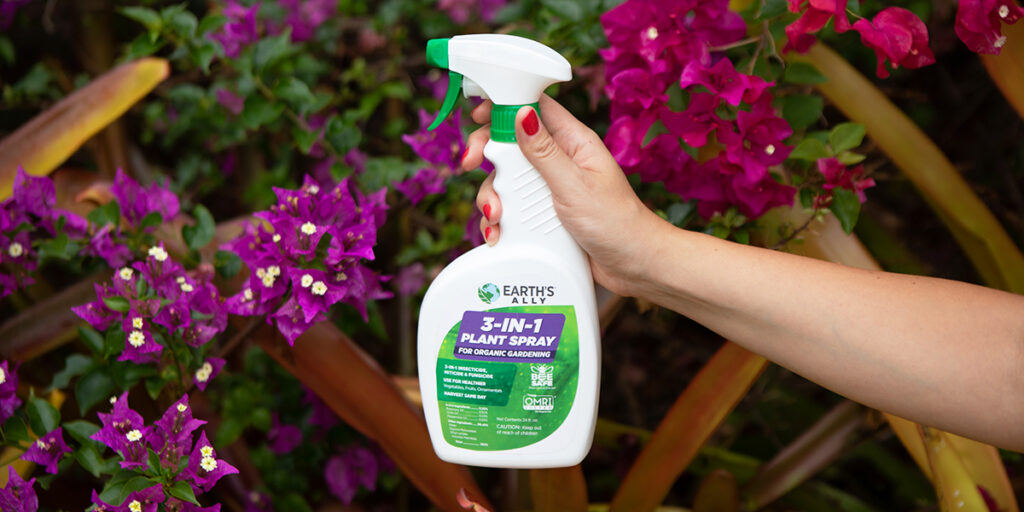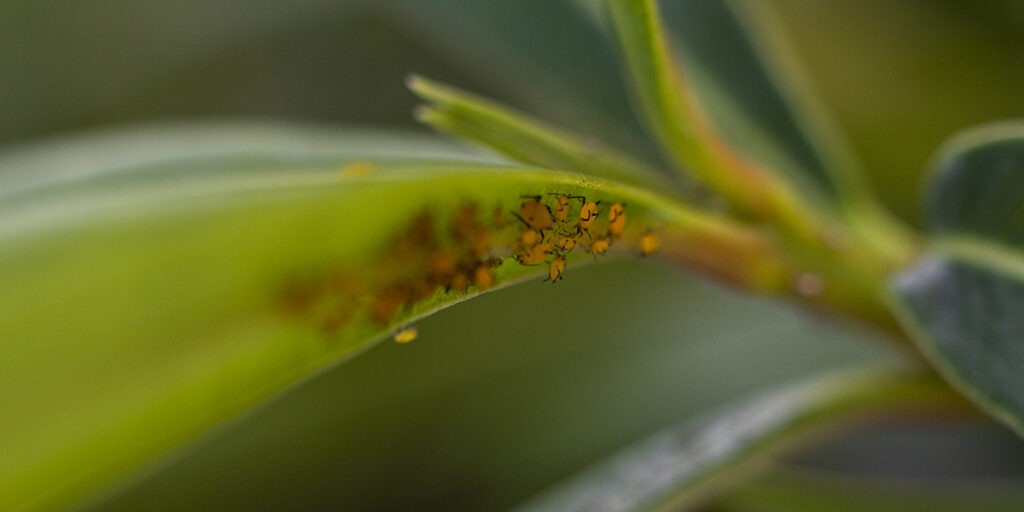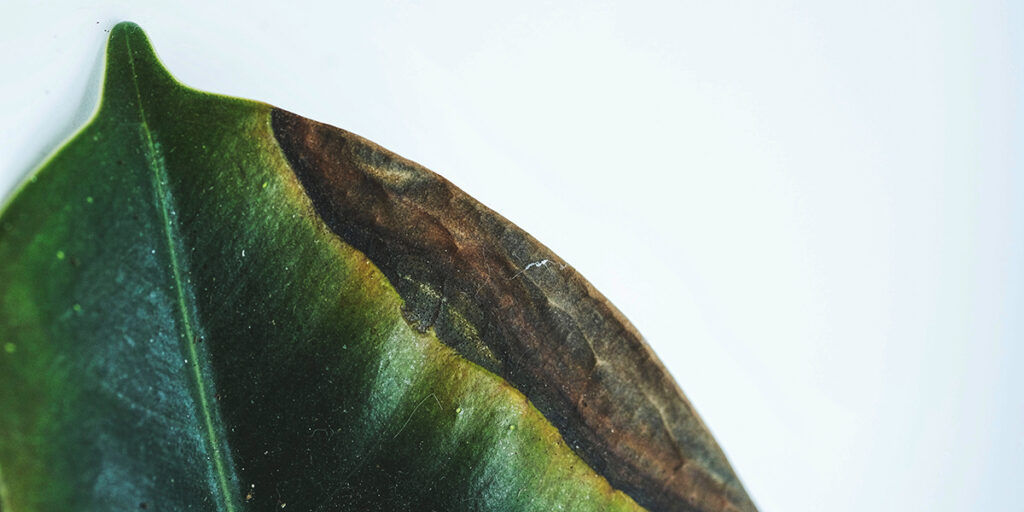
By Angelo Randaci, Earth’s Ally Horticulturist
Angelo’s passion for plants has led him to explore many areas of horticulture including research, grounds management, technical training, design and nursery management.
Earth’s Ally 3-in-1 Plant Spray is a pest and disease control product specially formulated to provide a safe and effective pest control solution. It leaves no harmful residue and is safe to use around people, pets and even bees when used as directed.

How Earth’s Ally 3-in-1 Plant Spray Works
- The botanical oils in Earth’s Ally 3-in-1 Plant Spray kill mites and soft-bodied insects on contact through two modes of action: paralysis and suffocation.
- The combination of thyme, rosemary, clove and peppermint oils disrupts their nervous system and pests are unable to move, eat or reproduce. Many stop moving in under a minute.
- Essential oils provide two layers of protection. They kill and repel harmful pests.
- When applied to insect or mite eggs, oils penetrate the soft shell and kill the developing embryo.
- Rosemary oil also has strong repellent properties and any insect not contacted by direct spray will quickly leave the treatment area.
- For common diseases, thyme oil is nature’s disinfectant, powerfully fighting microorganisms and protecting plants from common pathogens.

Insect Identifier: Know Your Bugs
Proper insect identification is key to effective control. Essential oils control soft-bodied insects. The list includes spider mites, aphids, white flies, mealybugs, thrips, and other soft-bodied insects. While essential oils have repellent properties, they will not effectively control caterpillars, beetles or other pests with hard shells.
How to Apply Earth’s Ally 3-in-1 Plant Spray
Shake well before each use and during application. Essential oils can separate.
Application Time of Day
- Outdoors: Best to spray during early morning or evening. Apply to dry foliage. Avoid the hottest part of the day and do not spray if temperatures are above 90F degrees or if rain is expected.
- Indoors: Spray whenever convenient. Do not spray if temperatures are above 90F degrees
Coverage
Essential oils kill by contact. The oils must make contact with the pest for them to work. Make sure to cover tops, especially undersides of leaves as well as any crevices where leaves meet the stems. Spray until the liquid begins to run off from the plant.

For Houseplants: Achieving complete coverage is easier when plants are in containers because you can turn the pot to reach all angles of the plant. Move your pots outdoors to spray if weather permits. If spraying indoors, put down a protective cover on floors and furniture or spray the plant in the bathtub. Smaller containers tipped or even turned upside down before spraying will help to saturate the bottoms of leaves. Spray soil around plants as part of your application in case any bugs fall off the leaves.
Persistence
If soft-bodied pests are persistent on your plants, one application is often not enough as more generations mature, within foliage and flowers, from egg to larva to adult. If you even missed one adult insect it can reproduce many more offspring overnight. Aphids are a prime example as one adult female aphid can give live birth to as many as 12 offspring a day without mating. Repeat applications every 3-5 days will ensure that you control current as well as future generations of pests.
Water Sprays
The first step in pest control is using a strong spray of water to knock aphids and other pests off the plant. Follow up with your essential oil spray after the foliage dries. Move indoor plants outdoors and give them a strong spray of water or move them to the shower. This step is not necessary if you want to save time or are concerned about damaging flowers and foliage. Plants in the Gesneriad family such as African Violets, Gloxinias, and Episcias do not like having water on their leaves.
Preventative Sprays
Spraying preventatively after control is achieved will keep your plants disease and pest free. Regularly check your plants for any signs of pests. Spray every few weeks preventatively or at first signs of pest problems. Be sure to follow label recommendations.

Damage
Any essential oil or synthetic spray will not fix the damage that has already occurred on the leaves of your plant. Spots and stippling on foliage will remain after treatment until new leaves have replaced the damaged ones. Remove severely infested foliage before treatment to reduce pest populations and isolate your plant to avoid contamination of nearby plants.
Plant Diseases
Essential oil sprays control many common diseases such as powdery mildew, downy mildew and black spot. Follow tips for pesticide control but omit spraying leaves with water as this can spread disease. Shake well before each use and during application. Apply to dry foliage. Spray to runoff, coating stems as well as both upper and lower surfaces of leaves and stems. Reapply every 7 days. For severe infections, apply and wait 4 hours, then repeat the application a second time. Repeat this process every 3-5 days as necessary.
Follow up with Sound Horticultural Practices
Pest and disease problems are stressful to plants. Keeping your plants watered and fertilized will speed up their recovery and give them an edge to resist pest insects and common diseases.

Plant Records
Keeping accurate records of pest issues during the season along with treatments used will help you be proactive for disease and pest control next growing season.
We’d love to hear how you’re using Earth’s Ally 3-in-1 Plant Spray. Share your experience and stay connected with the #EarthsAlly community on Facebook, Instagram and Twitter for access to our latest blog posts, giveaways and exclusive promotions.
